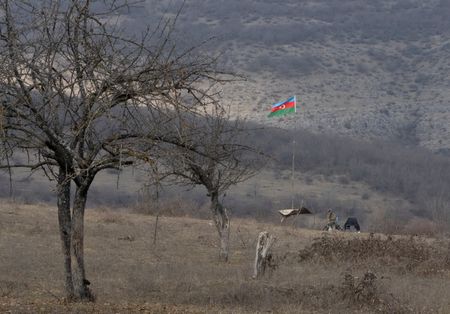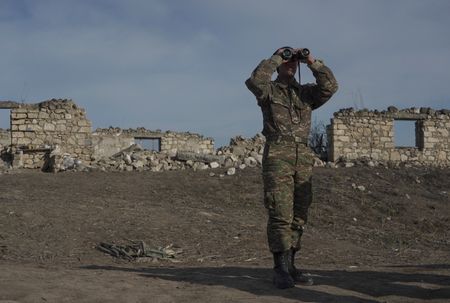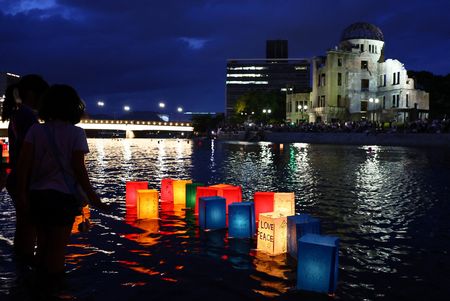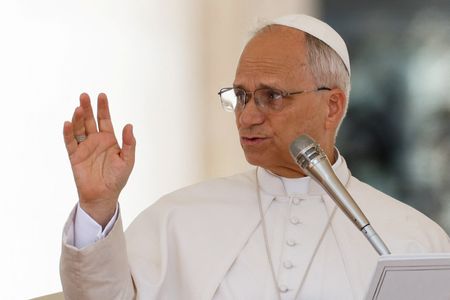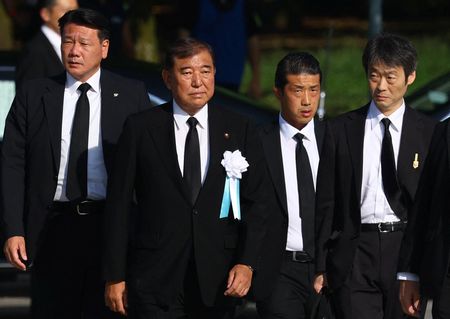By Lucy Papachristou
TBILISI (Reuters) -Armenian Prime Minister Nikol Pashinyan and Azerbaijani President Ilham Aliyev will meet with U.S. President Donald Trump at the White House on Friday as the bitter rivals work towards a peace deal to resolve nearly four decades of conflict.
The two sides said in March they had agreed on the text of a draft peace agreement, but progress since then has been sporadic and slow.
Here is a look at the history of the conflict between Armenia and Azerbaijan and the stumbling blocks that remain to inking a peace deal.
WHY ARE ARMENIA AND AZERBAIJAN IN CONFLICT?
Armenia and Azerbaijan, neighbours in the South Caucasus region, have been locked in conflict since the final years of the Soviet Union over Nagorno-Karabakh, a mountainous region at the southern end of the Karabakh mountain range, within Azerbaijan.
The region, known as Artsakh by Armenians, is internationally recognised as part of Azerbaijan, but until 2023 its 100,000 inhabitants were predominantly ethnic Armenians. Under the Soviet Union, Nagorno-Karabakh became an autonomous region within the republic of Azerbaijan, and it enjoyed de facto independence for decades after the Soviet collapse in 1991.
KARABAKH WARS
Bloody conflict over Karabakh dates back more than a century, but there have been two major wars since the late 1980s.
The First Karabakh War (1988-1994) saw more than 30,000 people killed and more than a million displaced, mostly Azeris driven from their homes when the Armenian side ended up in control of Nagorno-Karabakh itself and swathes of seven surrounding districts.
After decades of intermittent skirmishes, Azerbaijan began a military operation in 2020 that became the Second Karabakh War. It won a decisive victory in 44 days, taking back the seven districts and about a third of Nagorno-Karabakh itself.
EXODUS FROM KARABAKH
In September 2023, Azerbaijani forces launched an offensive against what remained of Karabakh, which quickly agreed a ceasefire and capitulated to Baku.
Almost all of the remaining 100,000 or so Armenians in the region fled to Armenia as refugees.
PEACE TALKS
Progress towards a peace deal has been slow, even after both sides said shortly after the Karabakh exodus that they wanted to sign a treaty to end their conflict.
In 2024, Armenia began handing back some disputed territory to Azerbaijan, including several uninhabited villages along the shared border. That move proved highly controversial in Armenia, triggering street protests in the capital Yerevan.
THE CONSTITUTIONAL ISSUE
One of the major hurdles to signing a peace deal is the issue of Armenia’s constitution. Azerbaijan is demanding that Armenia change the constitution’s preamble, which references the country’s 1990 declaration of independence. That document refers to a 1989 joint decision calling for the reunification of Armenia and Nagorno-Karabakh, then an autonomous region within Soviet Azerbaijan.
Baku views the reference to Karabakh within the Armenian constitution as making an implicit claim on Azerbaijani territory.
Pashinyan this year called for a referendum to change the constitution, but no date for it has been set yet. Armenia is to hold parliamentary elections in June 2026, and the new constitution is expected to be drafted before the vote.
THE TRANSIT CORRIDOR
Another hurdle to peace is a proposed transit corridor that would run roughly 32 km (20 miles) through Armenia and link the bulk of Azerbaijani territory with Nakhchivan, an Azerbaijani enclave that borders Baku’s ally Turkey.
Azerbaijan wants the corridor, but does not want Armenia to control it over fears Yerevan could swiftly revoke access.
The U.S. has proposed taking over management of the planned corridor, but Armenia has been cautious about the prospect, which is politically sensitive for Pashinyan ahead of next year’s elections.
(Reporting by Lucy Papachristou; Editing by Mark Trevelyan and Sharon Singleton)

